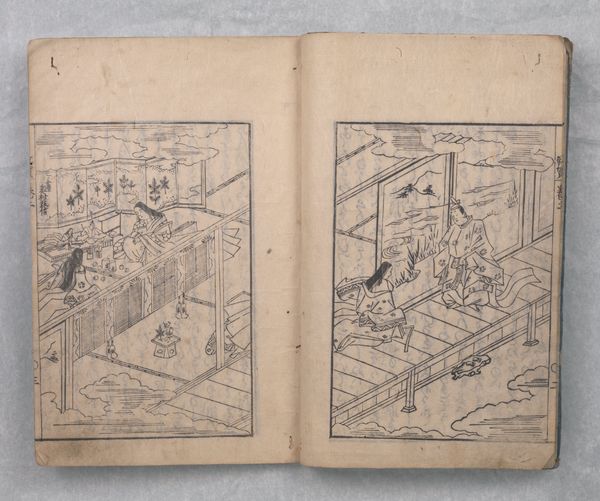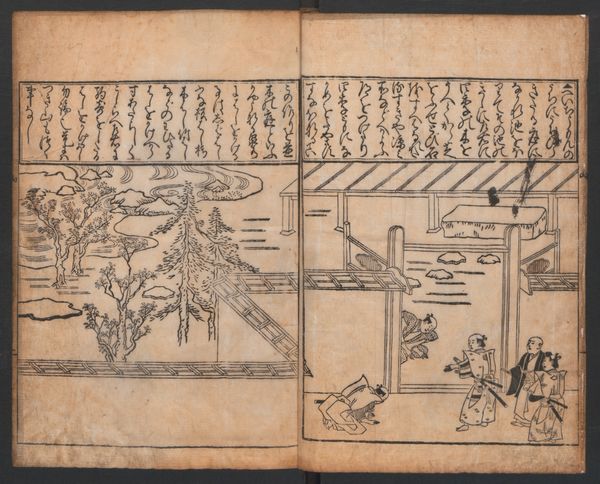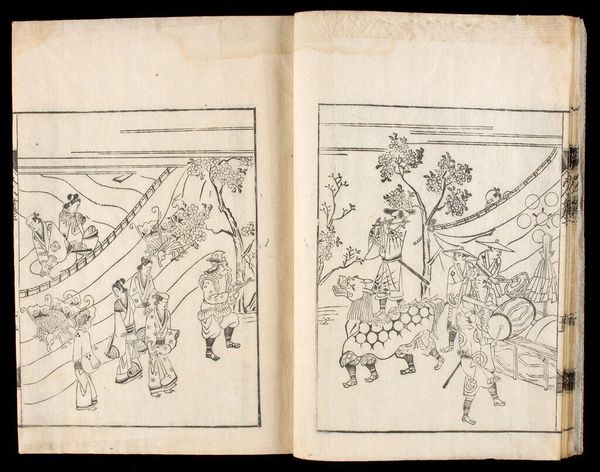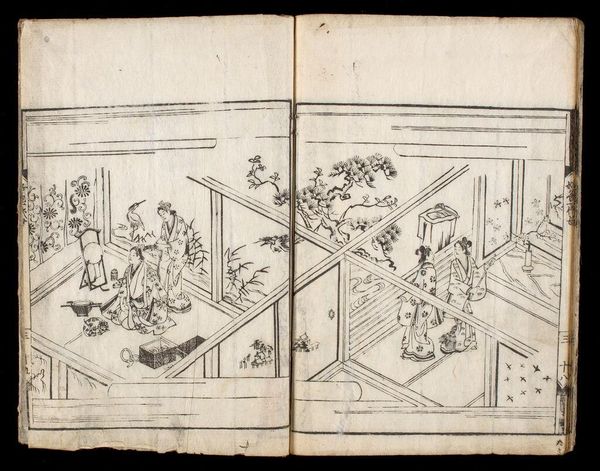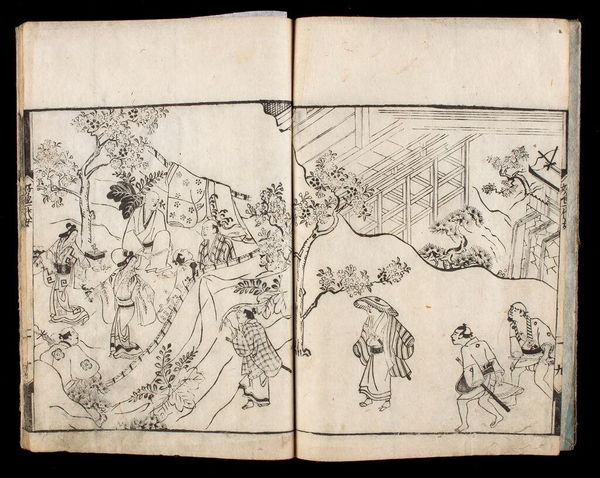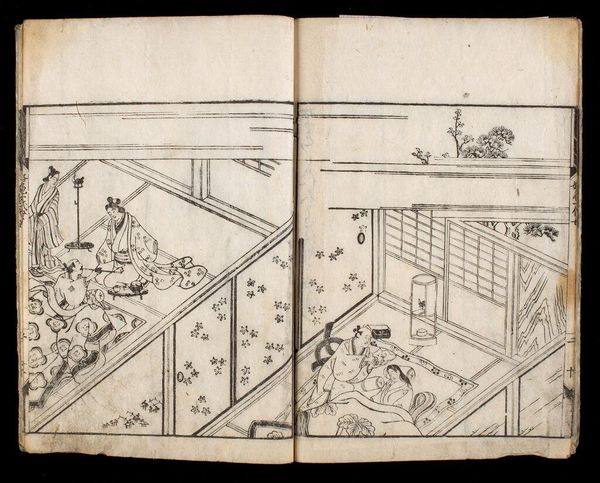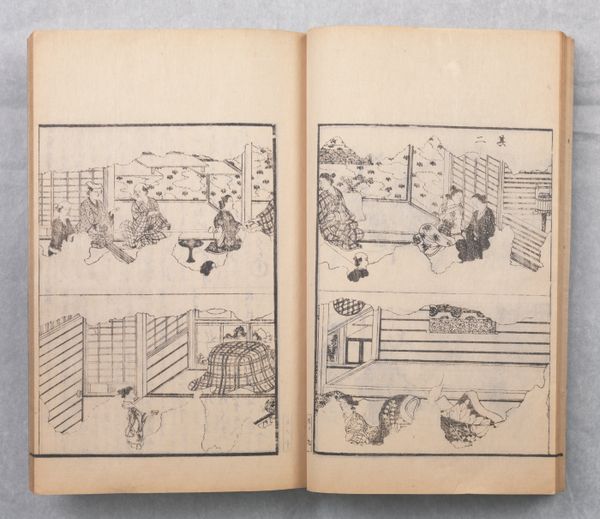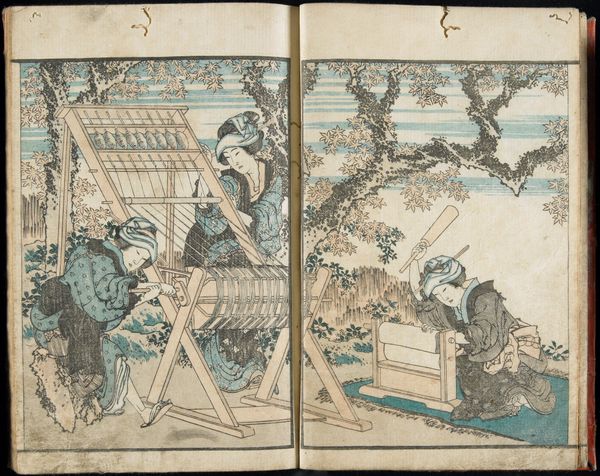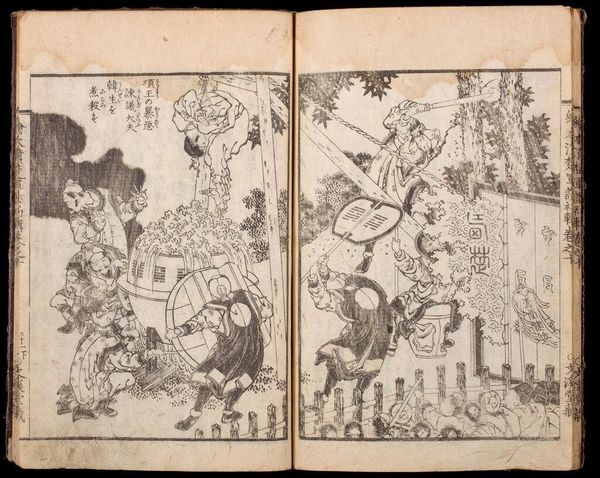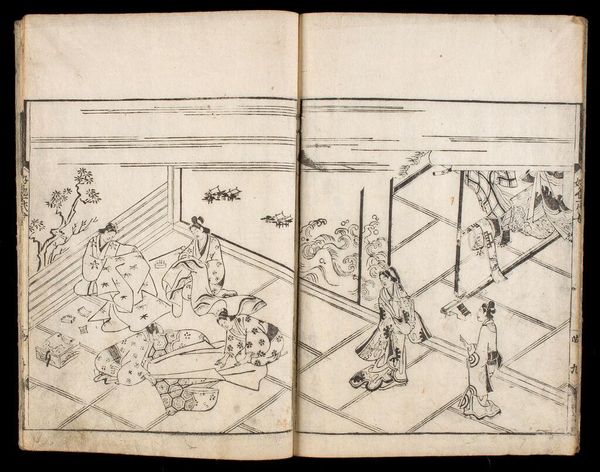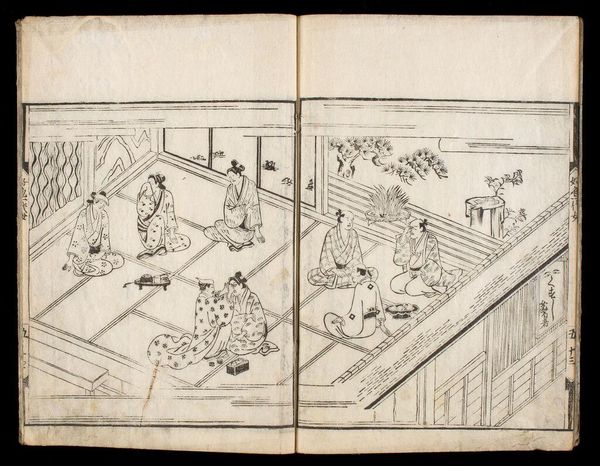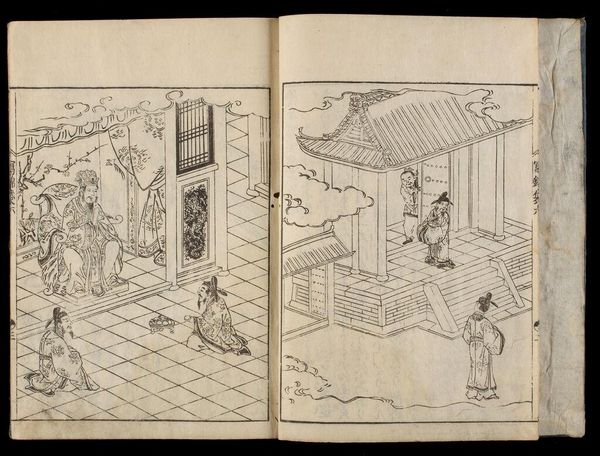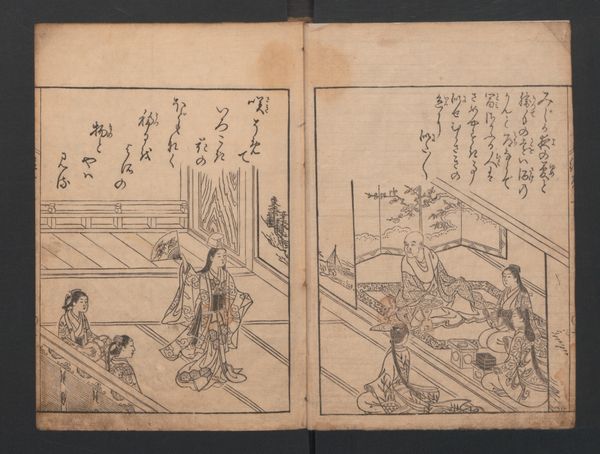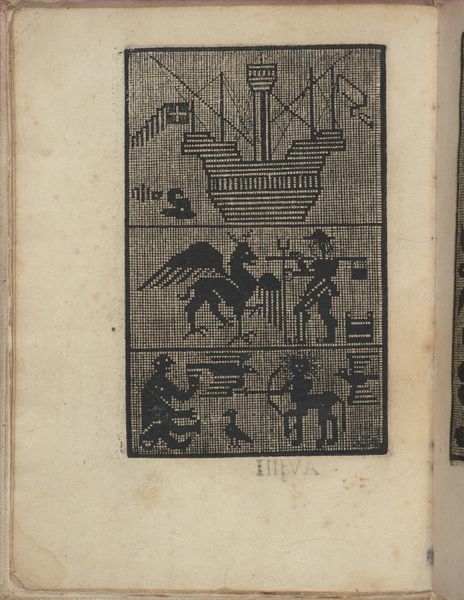
The Tale of Bunshō (Bunshō monogatari) 1675 - 1695
0:00
0:00
print, ink, woodblock-print
#
tree
#
aged paper
#
toned paper
#
narrative-art
# print
#
book
#
asian-art
#
sketch book
#
japan
#
personal sketchbook
#
ink
#
woodblock-print
#
pen-ink sketch
#
ink colored
#
men
#
pen work
#
sketchbook drawing
#
storyboard and sketchbook work
#
sketchbook art
Dimensions: Each: 8 3/4 × 6 1/8 × 1/8 in. (22.2 × 15.6 × 0.3 cm)
Copyright: Public Domain
Hishikawa Moronobu created The Tale of Bunshō in the late 17th century using woodblock printing, a technique central to the rise of Japanese Ukiyo-e prints. The monochrome images are carved into woodblocks, and then printed onto paper. This process allowed for mass production and distribution, making art accessible to a wider audience beyond the elite circles. The linear quality visible in the prints is a direct result of the carving process. The stark lines delineate forms and create depth. The texture of the paper also plays a role, adding a tactile dimension to the visual experience. Woodblock printing required a collaborative effort, with specialized artisans for carving, printing, and publishing. This division of labor reflects the growing commercialization of art during the Edo period. It ties the print to broader issues of labor, production, and consumption in a rapidly changing society. Paying attention to the materials, processes, and social context of production enriches our understanding of this artwork, inviting us to reconsider traditional distinctions between fine art and craft.
Comments
No comments
Be the first to comment and join the conversation on the ultimate creative platform.
